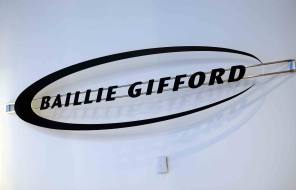
Tom Slater, co-manager of this £469m fund, explains: “The aim of the American fund is to generate long-term capital growth for investors by identifying some of the most attractive growth businesses in America and owning them for long periods of time, such that the advantages they have that stem from their culture and their competitive position translate into stockmarket returns.”
This concentrated portfolio of between 40 and 60 stocks is also managed by Gary Robinson and Helen Xiong.
When selecting businesses for the portfolio, Mr Slater reveals there is a strong emphasis on culture on the basis that he and his co-managers are long-term shareholders.
He admits: “There’s no point looking at culture unless you think the business has something that will lead to a sustainable edge – which will lead to higher returns. We put our holdings into three buckets. First are transformational growth companies, so those using technology to enable new business models that are transforming the industries in which they operate – Facebook in advertising, Amazon in retail, or Tesla in the auto industry, for example. We then have the dynamic growth bucket – those companies that are growing rapidly, often by taking share in their industry, but that have a physical infrastructure so they require capital to grow – something like First Republic Bank. Then we have the enduring growers, those that have a big opportunity but the pace of exploitation is more patient and, often, brand is an important component of their edge.”
In the transformational bucket, for example, Mr Slater believes the presence of founder management teams with a significant proportion of the equity is an important cultural characteristic. “Whether it’s [Jeff] Bezos at Amazon or [Mark] Zuckerberg at Facebook, the ability to make decisions based on the long-term growth of the business rather than the short-term demands of stockmarkets is absolutely crucial to spotting new opportunities.”
After considering the culture of a company, the manager looks at the company’s edge and how that might translate into attractive returns on capital. Finally comes the valuation part of the investment process, which is where he takes a five-year view. “The criteria are: can we make 2.5 times our money in any individual investment over the next five years and why do we think we’re more likely to do that in this stock than in a stock picked at random?” says Mr Slater.
The bottom-up process pays little attention to the macroeconomic backdrop, apart from when assessing wider trends emerging from the US. “One of those areas is healthcare, where we think there are some interesting developments in genomics and the potential for new therapies based on greater levels of genomic understanding,” he points out.
The key investor information document for the clean B share class shows the fund sits at level five on the risk-reward scale, with ongoing charges of 0.67 per cent.
The fund has outperformed both its sector and benchmark over the longer term, according to FE Analytics. In the 10 years to September 21 2016, it returned 209 per cent to investors, compared to the IA North America sector average return of 148.1 per cent and the S&P 500 index’s gain of 179.1 per cent over the period. In the shorter term, the fund’s performance has held up, delivering a 34.9 per cent return in the past 12 months to September 21, against the peer group average of 25.4 per cent and the index’s rise of 33.5 per cent.
Mr Slater identifies bond trading platform MarketAxess as one of the main drivers of performance over the past year. “It has successfully introduced an electronic trading platform into what is a selection of quite disparate, slightly illiquid markets,” he points out. Amazon, the portfolio’s biggest holding, has also performed well, with Mr Slater citing its move towards an artificial intelligence-driven interface as “a step up in the quality of the user experience”.
One of the more disappointing performers, which the portfolio has since sold out of, was Lending Club, the US peer-to-peer lender. He explains: “The founder, in pursuing growth, had not done what was necessary in terms of building in the right control environment. In financial services, if you don’t have a robust control environment, people will not trade with you.”



